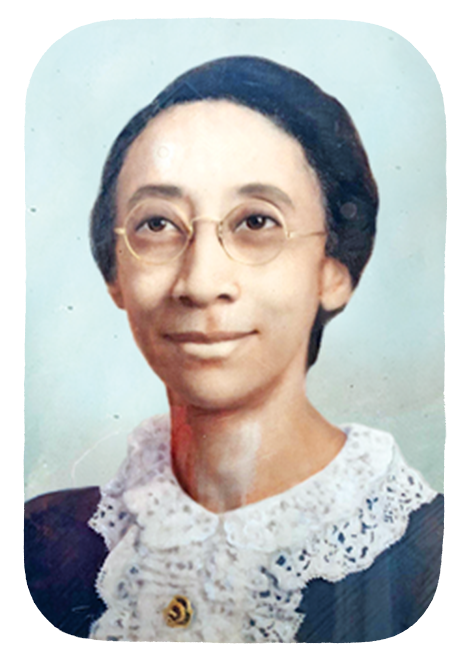Nettie Grimes Gregory,
Youth Advocate & Community Organizer
1890-1964
Nettie Grimes Gregory was a tireless advocate for the youth of her community and recognized the need for recreational facilities for young Black Americans in Salt Lake City’s westside neighborhoods. Her civic-mindedness and persistence helped make the community center that bears her name not only a possibility but also a beacon of safety and inclusion.
Nettie was born in Jackson, Tennessee in 1890 to Fosh Elliott Grimes and Ann Elizabeth Copeland. She grew up with a love for music and children, which motivated her to become a teacher. In 1914, she married William Gregory, who was working as a pullman porter for the Union Pacific railroad. After the Ku Klux Klan ran William’s father out of Tennessee, William convinced Nettie to leave Tennessee for the first time and permanently move to Salt Lake City so they could live safely while he continued to work for the railroad. They raised their four children in Poplar Grove, a primary neighborhood for Salt Lake City’s Black American community.
During that time in Utah, even though Jim Crow laws were not on the books, segregation and discrimination shaped the everyday lives of Black Utahns and determined where they lived, where they could eat, and the resources they could access. In response to their exclusion from full participation in Utah’s general social and cultural activities, the Black community gradually established its own clubs, churches, newspapers, and other social and political institutions. It also congregated geographically, primarily because redlining and restrictive covenants prevented many Black Utahns from buying homes in any areas other than Salt Lake City’s westside.
Despite these inequities, Nettie was determined to build a thriving community in their new home. She became involved in a local sewing group called the Nimble Thimble Club and organized musical programs for local churches such as Trinity AME and Calvary Baptist. She also served as president of the Salt Lake Community Club. Nettie worked within these community organizations to raise funds for community needs through bake sales, fish frys, bazaars, and other fundraising efforts.
 Upon arriving in Utah, Nettie immediately began focusing on supporting young people in her community because the city did not invest in recreational spaces in West Salt Lake. This need drove her to lead fundraising efforts for over fourteen years to build a community center in Poplar Grove. Because of her efforts, the center was finally built and served as a central location for Salt Lake City’s Black American community. Although Nettie passed away from a stroke in 1964, before she could witness the grand opening of the community center later that year, it was named the Nettie Gregory Center in her honor. This modest two-story white brick building, located on the edge of Poplar Grove just west of I-15 at 742 W. South Temple, was the first of its kind in Salt Lake City to be built by Black residents. The community center hosted events including after-school programs, cultural celebrations, Juneteenth parties, voter drives, NAACP operations, sports and theater events, and employment programs for the community until the early 2000s.
Upon arriving in Utah, Nettie immediately began focusing on supporting young people in her community because the city did not invest in recreational spaces in West Salt Lake. This need drove her to lead fundraising efforts for over fourteen years to build a community center in Poplar Grove. Because of her efforts, the center was finally built and served as a central location for Salt Lake City’s Black American community. Although Nettie passed away from a stroke in 1964, before she could witness the grand opening of the community center later that year, it was named the Nettie Gregory Center in her honor. This modest two-story white brick building, located on the edge of Poplar Grove just west of I-15 at 742 W. South Temple, was the first of its kind in Salt Lake City to be built by Black residents. The community center hosted events including after-school programs, cultural celebrations, Juneteenth parties, voter drives, NAACP operations, sports and theater events, and employment programs for the community until the early 2000s.
In the words of her grandson, Tony Lovett: “[Nettie] was really small but she was a powerful woman. When she spoke, you listened.” Her determination created a legacy that lives on today. She stands as a West Side woman who worked to realize the vision she had for her community.


